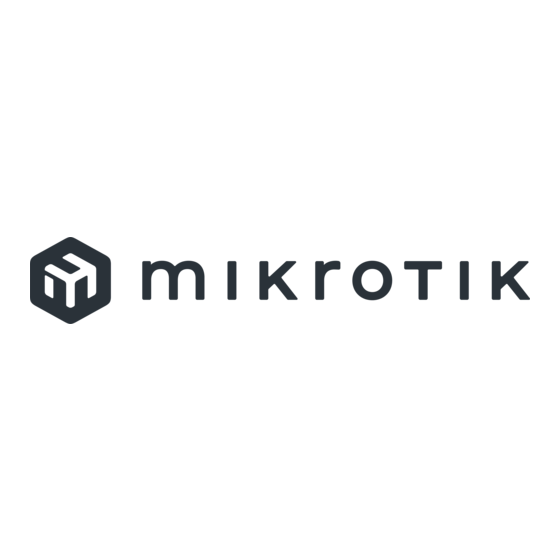
Table of Contents
Advertisement
Quick Links
LDF series
The LDF (Lite dish feed) is an outdoor wireless system with a built in antenna, meant to be installed on satellite
offset dish antennas. The device comes preinstalled with RouterOS and is ready to use.
Assembly
The device is compatible with standard offset dishes, commonly used for satellite television. The offset mount is
universal at 40mm diameter, and the LDF can easily be placed inside it. To attach the ethernet cable to the LDF
unit, follow these steps:
1. Assemble all components as shown in the illustration. If using pre-made cables, cut the rubber seal on one
side, to put it onto the cable. Self crimped cables should be crimped after the seal is on the cable
2. Connect ethernet cable to ethernet connector on LDF
3. Attach Housing nut to LDF body by rotating clockwise
4. Slide rubber seal into housing nut, then enclose the waterproof gland by turning compression nut clockwise
Powering
The device accepts 10-28V DC input from passive Power over Ethernet injectors. The device does not work with
IEEE802.3af compliant 48V power injectors. A PoE injector is included in the package.
Connecting
1. Connect an ethernet cable to the ethernet port, connect the other end of the Ethernet cable to a PoE injector.
Plug the PoE injector into your PC or into your local network switch.
2. Set your computer IP configuration to automatic (DHCP).
3. Default IP address of the unit is 192.168.88.1, open this address in your web browser to start configuration.
The username is admin and there is no password.
RouterOS includes many configuration options in addition to what is described in this document. We suggest to
start here to get yourself accustomed to the possibilities:
Winbox tool (http://mt.lv/winbox) can be used to connect to the MAC address of the device from the LAN side (all
access is blocked from the internet port by default).
Extension slots and ports
•
One Integrated Wireless chip with built in antenna, max gain 9dBi + the gain of the dish that it is mounted in.
•
One ethernet port, supporting automatic cross/straight cable correction (Auto MDI/X), so you can use either
straight or cross-over cables for connecting to other network devices.
Operating system support
The device supports RouterOS software with the version number at or above what is indicated in the RouterOS
menu /system resource. Other operating systems have not been tested.
See www.mikrotik.com for more information. Contact support@mikrotik.com for support questions.
http://mt.lv/help
In case IP connection is not available, the
04/08/2017
Advertisement
Table of Contents

Summary of Contents for MikroTik LDF Series
- Page 1 Operating system support The device supports RouterOS software with the version number at or above what is indicated in the RouterOS menu /system resource. Other operating systems have not been tested. See www.mikrotik.com for more information. Contact support@mikrotik.com for support questions. 04/08/2017...
- Page 2 L'exploitation est autorisée aux deux conditions suivantes : (1) l'appareil ne doit pas produire de brouillage, et (2) l'utilisateur de l'appareil doit accepter tout brouillage radioélectrique subi, même si le brouillage est susceptible d'en compromettre le fonctionnement. See www.mikrotik.com for more information. Contact support@mikrotik.com for support questions. 04/08/2017...
- Page 3 GR. εγχειρίδιο οδηγιών: Συνδέστε τον προσαρµογέα τροφοδοσίας για να ενεργοποιήσετε τη µονάδα. Ανοίξτε 192.168.88.1 σε ένα πρόγραµµα περιήγησης στο Web για να διαµορφώσετε το προϊόν. Περισσότερες πληροφορίες στο http://mt.lv/help See www.mikrotik.com for more information. Contact support@mikrotik.com for support questions. 04/08/2017...


Need help?
Do you have a question about the LDF Series and is the answer not in the manual?
Questions and answers